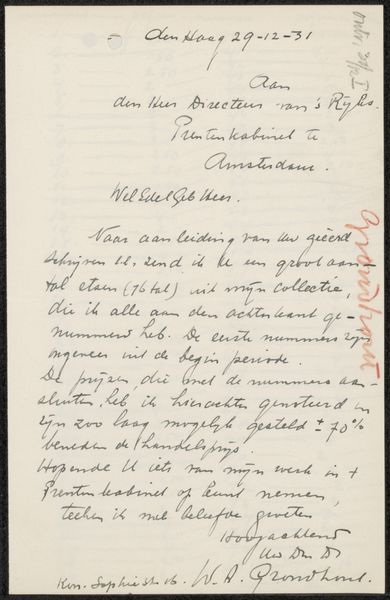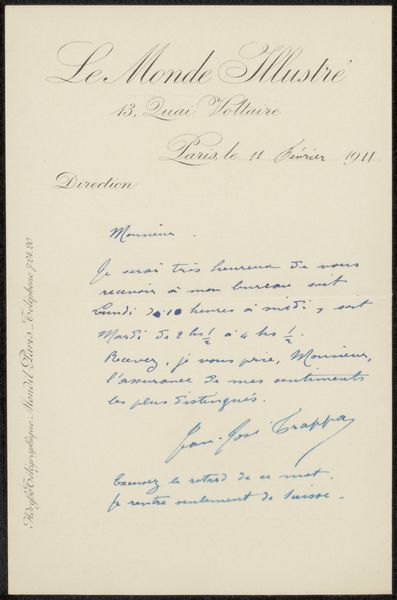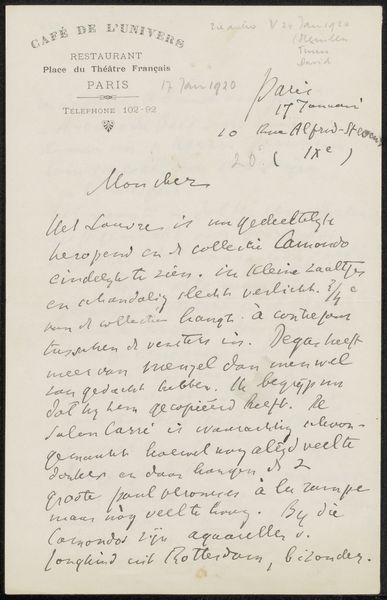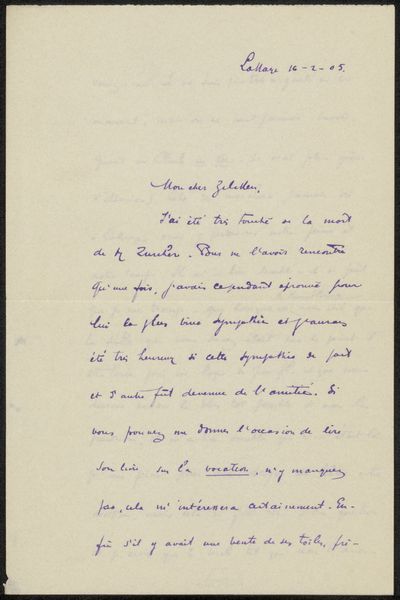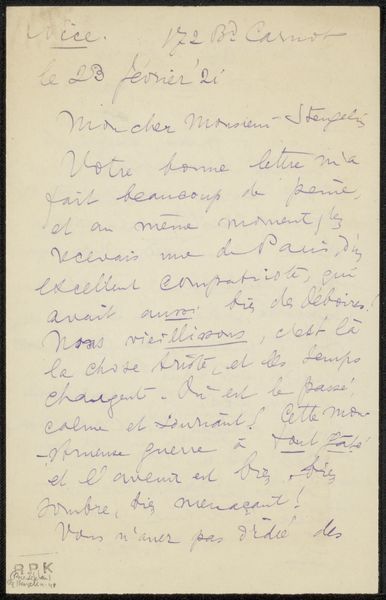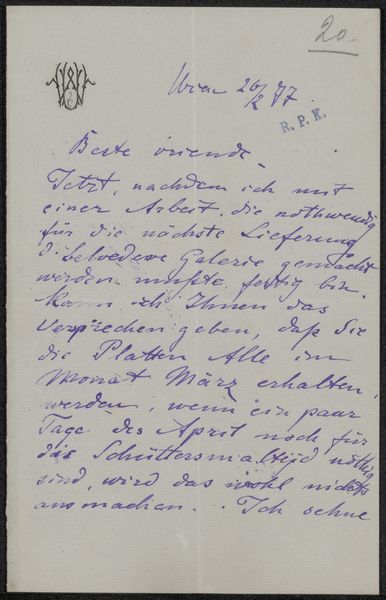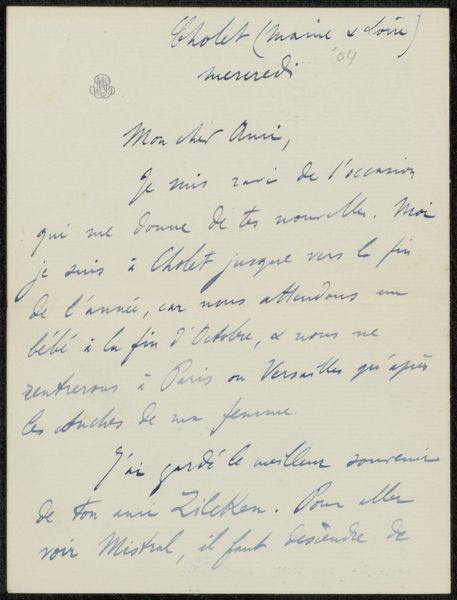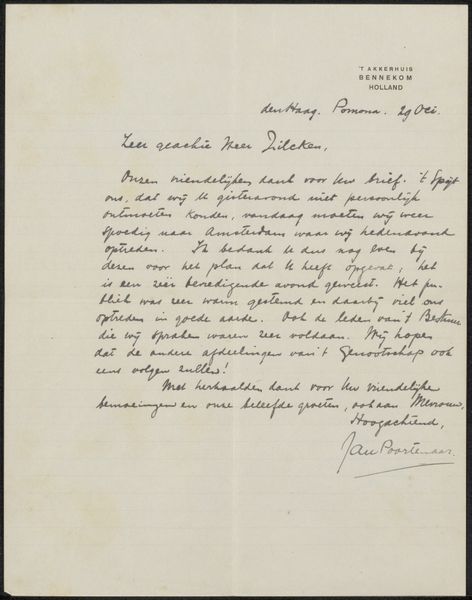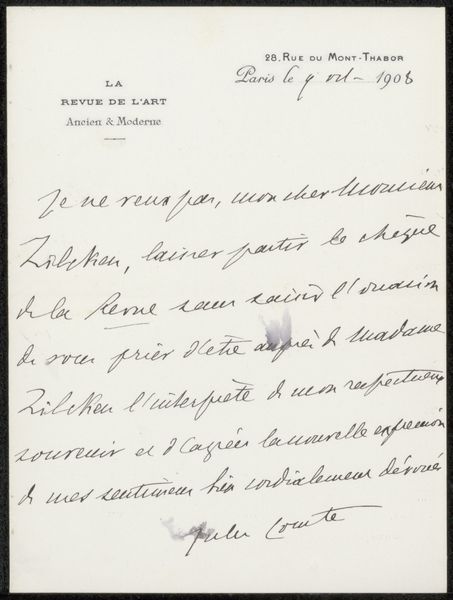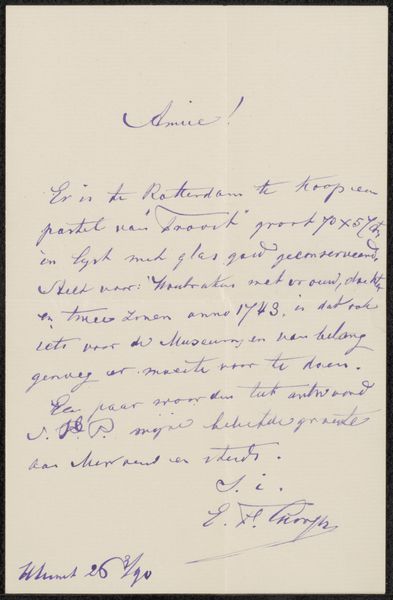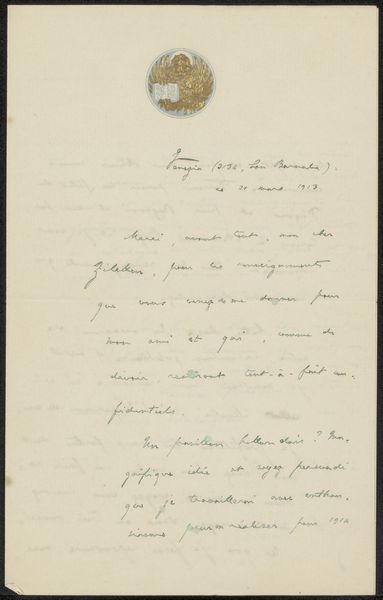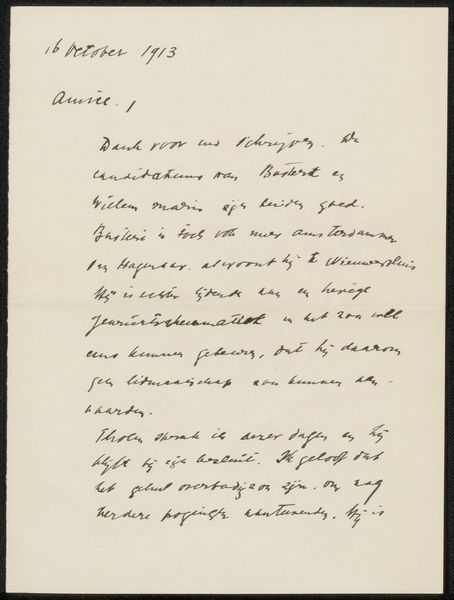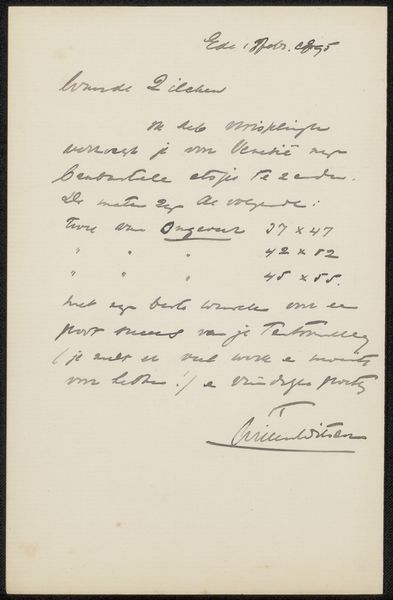
drawing, paper, ink, pen
#
drawing
#
paper
#
ink
#
pen
#
calligraphy
Copyright: Rijks Museum: Open Domain
Curator: Here we have “Brief aan Philip Zilcken,” possibly created between 1930 and 1936. The work is composed of ink pen on paper, demonstrating an adept hand in calligraphy. Editor: It gives an immediate impression of formality. That cursive, the watermarked paper, hints at a high degree of refinement and officialdom. There's almost a fragility to it though, seeing how delicate the ink strokes are against the backdrop. Curator: Indeed. Letters like these offer unique insights into the social networks of artists and intellectuals of the period. They allow us to understand the dynamics that underpinned the cultural landscape, often revealing collaborative spirit that goes into the shaping of modernism. Editor: Absolutely, but the sheer physicality interests me just as much. Consider the act of handwriting itself: the quality of the paper, the properties of the ink, the way it interacts. It's a tactile encounter frozen in time. The labour is self-evident. Curator: But how does one begin to quantify labour when interpreting what’s recorded? In what way did networks and institutions promote—or inhibit—artistic expression? Who had the means to exchange written missives versus others? Editor: By noticing that difference we highlight its relative value, whether intended or not! A handwritten letter is also subject to skill and materials. The availability of quality ink, the pen, access to parchment…all imply means. I find something deeply revealing about that aspect of its creation. Curator: True, considering those details helps provide insight, especially when it leads us back into social context, giving new context for the letters. What role did patronage or independent funding play in facilitating a writer like Maeterlinck and how it shapes the perception of the arts. Editor: And how might an understanding of materiality reshape conventional academic ideas about authorship and artistic production in a supposedly more ethereal form of art? Curator: A pertinent question as it pushes us to consider new methods of valuation within our art community, to seek equitable measures. Editor: Indeed, recognizing the intricate relationship between object and its socio-economic origins only enhances the artistic conversation. It is fascinating.
Comments
No comments
Be the first to comment and join the conversation on the ultimate creative platform.
